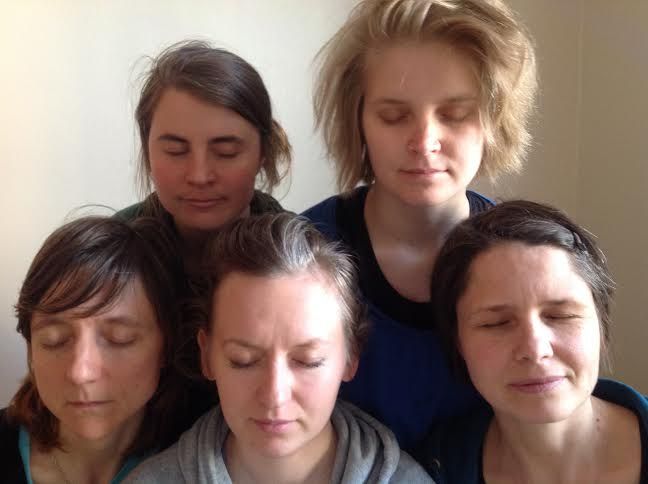2nd LEAP LOCAL MEETING in Joensuu Sun 18 May 2014
Elina Ikonen (Islo/LEAP)
Eszter Gal, LEAP
Mari Kortelainen
Ksenija Opria (Islo student)
Heidi Kämäräinen (Islo student)
Anna Venäläinen
Pia LIndy (Islo/ LEAP -facilitator)
CAN DANCE BE THE ANSWER? Do you need answers? if not, what then?
As a facilitator Pia suggested a working structure which was “a lighter version/variation” of a bit longer structure that Pia and Elina Ikonen have suggested to this year´s symposium in Vienna:
Coming together, being together and working together.
The idea was to work in small groups and to write, talk and dance and share about our contemplations and questions about teaching dance.
COULD DANCE BE THE ANSWER? How is moving helping or inspiring the writing, talking and sharing and what kind of this can also be articulated trough dance (with no need for words).
What is knowledge?
What is a skill?
What are you teaching?
What should you teach?
What do you want to teach, how do you want to teach?
What is your relationship to art and creativity?
How has your teaching changed with age or time?
How do you tune in to your teaching?
What do you need there to be that you can call it a class or teaching?
Suggesting that the moving/dancing could be a laboratory for your and other people´s questions.
Words and thoughts that came up from the working:
- tight plans or open structures
- focuses that you are not saying out aloud and participants figure them out anyway ("see them in you or through you")
- the sense or feeling that there is a need for something…
- how much you need to answer for the needs?
- where and when does the creativity start?
- what do you really want to share?
Things noticed when dancing and moving was included
- because of having shared some questions its was easy to move with the other one
- so much knowledge is spread and shared through moving
- learning is so much about the others, what do you really know or can learn alone?!!
- the joy and also sense of freedom when other people in the group gave a task or a focus to work on
- how to recognize focuses coming up in a group and how to grasp them (or not)
- accepting time (in different ways), time as a limitation, time as a frame, time as a stressful thing,
- the sense of time
Thoughts coming up when groups came together:
About process - how everything goes, how to develop the work - How do we begin?
Where is the dance?
Where is the information?
What is your goal?
How to deal with competition or with questions about value
The difference of groups
How to survive as a dancing teacher / dance artist and a teacher?
Alertness
Readyness
Cannot do everything at the sometime (simple but demanding)
In the end we took some photos and Eszter collected short sentences/titles for possible “Food for the day” - ideas at the Idocde-webpage.
HELSINKI LEAP LOCAL MEETING AT THE AIRPORT Cafe PICNIC Sat 24 May
Eszter Gal
Vera Lapitskaya
Sally Davison
Jonna Lehto
Pia Lindy (ISLO/facilitator)
(All 4 are coming to Vienna -symposium August 2014; Liisa Jaakonaho is also coming, but she couldn´t come to this meeting))
Meetings started with Eszter´s introduction of herself, her job in the LEAP-project and of the coming LEAP- symposium.
We talked about the diversity of methods in the teaching of contemporary dance and shared some of our individual questions and thoughts.
- Non - hierarchical teaching
- Being a freelancer -teacher / being a teacher inside academia
- Stagnancy - things that never seem to change, invisible walls (what are those, what make them be there?)
How to support independent dance teachers and artists. Sally mentioned London and Independent Dance as a nice example of an organization that supports independent dancers and teachers. Idocde -webpage can also be seen as supportive structure for independent teachers and artists.
- How to get information about different practices.
The practical side instead of lots of theories
- where are you now as a teacher? What is really my work? What do I teach?
- How do you apply your knowledge to your teaching? Even more clearly? How to look for the specificity?
WHAT COULD SUPPORT IN PRACTICAL WAYS:
- regular meetings - how to organize them in Helsinki? A monthly meeting would not be too difficult to organize and it could be co-organized. (Space, spreading information, changing of or a shared responsibility)




